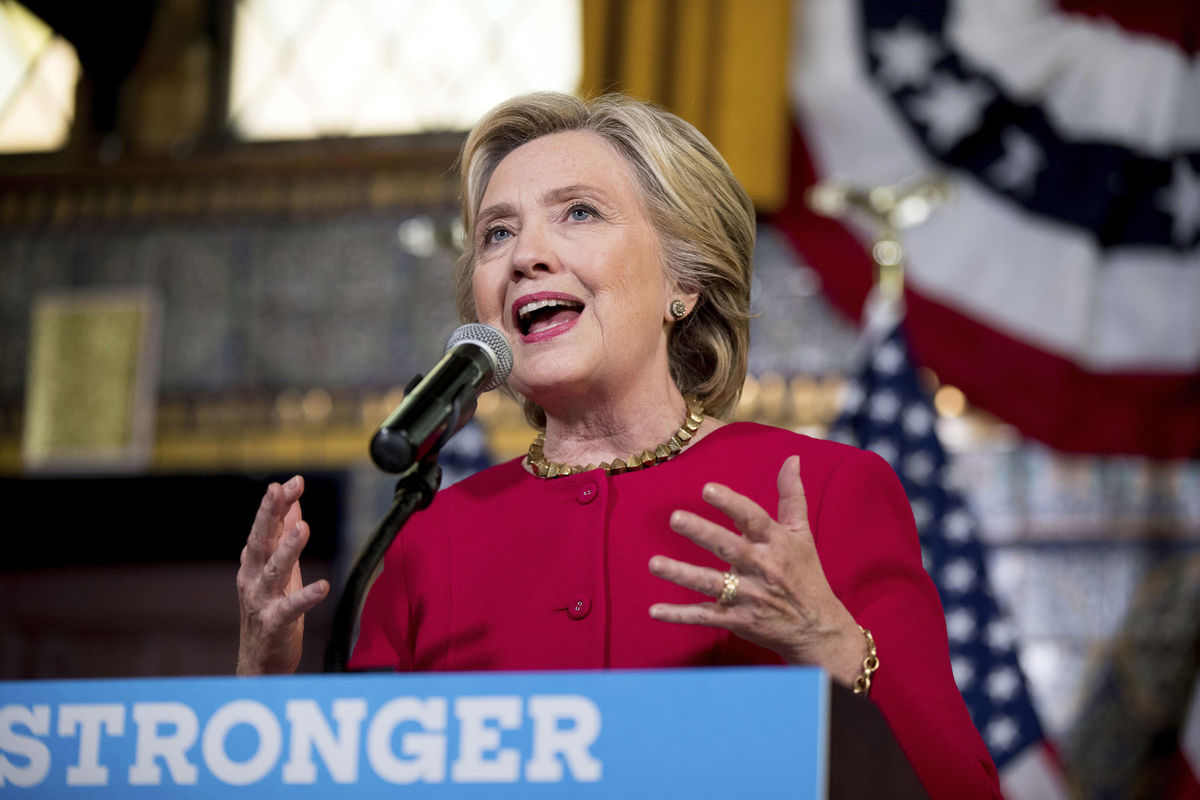
Each night, Hillary Clinton‘s data experts head to a conference room on the 11th floor of her Brooklyn headquarters, to start counting votes.
The sessions in the “early voter boiler room,” as it’s been dubbed by campaign aides, stretch into the early hours of the morning. The team pores over turnout patterns in states where advance voting is already underway, projects how many votes Clinton and Republican Donald Trump have already received, and updates crucial targeting lists of the voters she still needs.
For Clinton, October is when she’s likely to win or lose the election, not Nov. 8. By the third week of this month, Clinton’s campaign hopes to have a solid enough sample of the early vote to know whether the Democrat is on track to win the White House.
“Many battleground states are already voting so every day is Election Day,” said Matt Dover, Clinton’s voter analytics director.
In several competitive states, including North Carolina, Iowa, Colorado, Florida and Nevada, at least 45 percent of the total vote is expected to come in early. Initial metrics show good news for Clinton in North Carolina, a must-win state for Trump. There are modestly positive signs for the Republican in Iowa, but that’s a state the Democrat can likely afford to lose.
The Republican National Committee, which oversees early voting and turnout operations for Trump, is also encouraging supporters to take advantage of opportunities to cast ballots before Nov. 8. The party has significantly stepped up its analytics and voter-targeting operations since being outmatched by Democrats in the past two presidential elections, but the 2016 race is the first test of its strength in a national election.
Despite improvements, the RNC system was always intended to be a complement to whatever operations the eventual GOP nominee brought to the table. Trump arrived in the general election with intense enthusiasm among his core supporters but few ways to harness it into trackable voter data.
Unlike Clinton, whose travel schedule is being built around voter registration deadlines and the start of early voting in key states, Trump’s battleground stops haven’t been pegged to those benchmarks. However, there is a noticeably more robust registration effort at Trump rallies and the candidate himself is making explicit early voting appeals to supporters.
“Get those ballots in because the only way this is going to be taken away (is) if we’re foolish or if we let people take it away from us,” Trump said Monday during a rally in Colorado. “I hate to interrupt my speech with these minor details but they’re very important, right?”
Republicans traditionally do well initially with mail-in absentee balloting before Democrats surpass them during in-person early voting. That makes the start of in-person voting a key indicator as to whether core Democratic constituencies, such as young people and non-whites, show up.
“For me, voting early is a matter of convenience, and if I don’t do it I’m unlikely to vote at all,” said Joseph Wozniak, 23, of Macon, Georgia. A recent college graduate who declined to say who he is supporting in the election, Wozniak is working on early vote efforts for the non-partisan organization Democracy Works.
Thirty-seven states allow voting with little restriction before Election Day, either in person or via mail. By the third week in October, 34 of those states will be voting.
Iowa was the first of the battlegrounds to start in-person voting last Thursday. Of the 39,435 people who have cast ballots, 58 percent were Democrats and 25 percent were Republicans — but that was much closer than in 2012.
In North Carolina, buoyed by strong voter interest, Clinton appears to hold an edge with Democratic ballots submitted so far currently leading Republican ones, 40 to 35 percent. At this point in 2012, Republicans had opened a wide lead over Democrats in ballots, due in part to strong support among older whites.
For 2016, Clinton officials pointed in particular to a 13 percent increase in African-American and a 40 percent jump in Latino mail-in ballot requests. To them, it’s a hopeful sign that non-whites and young people will be engaged this election, part of a shift in campaign strategy to more strongly mobilize less reliable, sporadic voters first. Still, the campaign said it will have a much clearer picture once in-person voting begins in the state on Oct. 20.
Similarly in Florida, absentee balloting began only Tuesday, but already more than 2.5 million people — nearly one-third of the total number of votes cast in 2012 — have requested ballots. In-person voting doesn’t begin until Oct. 24, so state Democrats are now strongly urging voters to vote by mail — including in a letter from President Barack Obama paid for by the party.
“In Florida, voting is easier than ever because now you can vote by mail,” he writes. “It’s the fastest and most convenient way to make your voice heard.”
In Obama’s historic 2008 race, he ran up such big early voting advantages in four battlegrounds — Colorado, Florida, Iowa and North Carolina — that his rival, John McCain, couldn’t catch up, despite winning the Election Day vote in those states, according to AP data.
If all goes according to the Clinton campaign’s plan, early ballots soon enough will start to unequivocally point in the same direction.
Republished with permission of the Associated Press.



